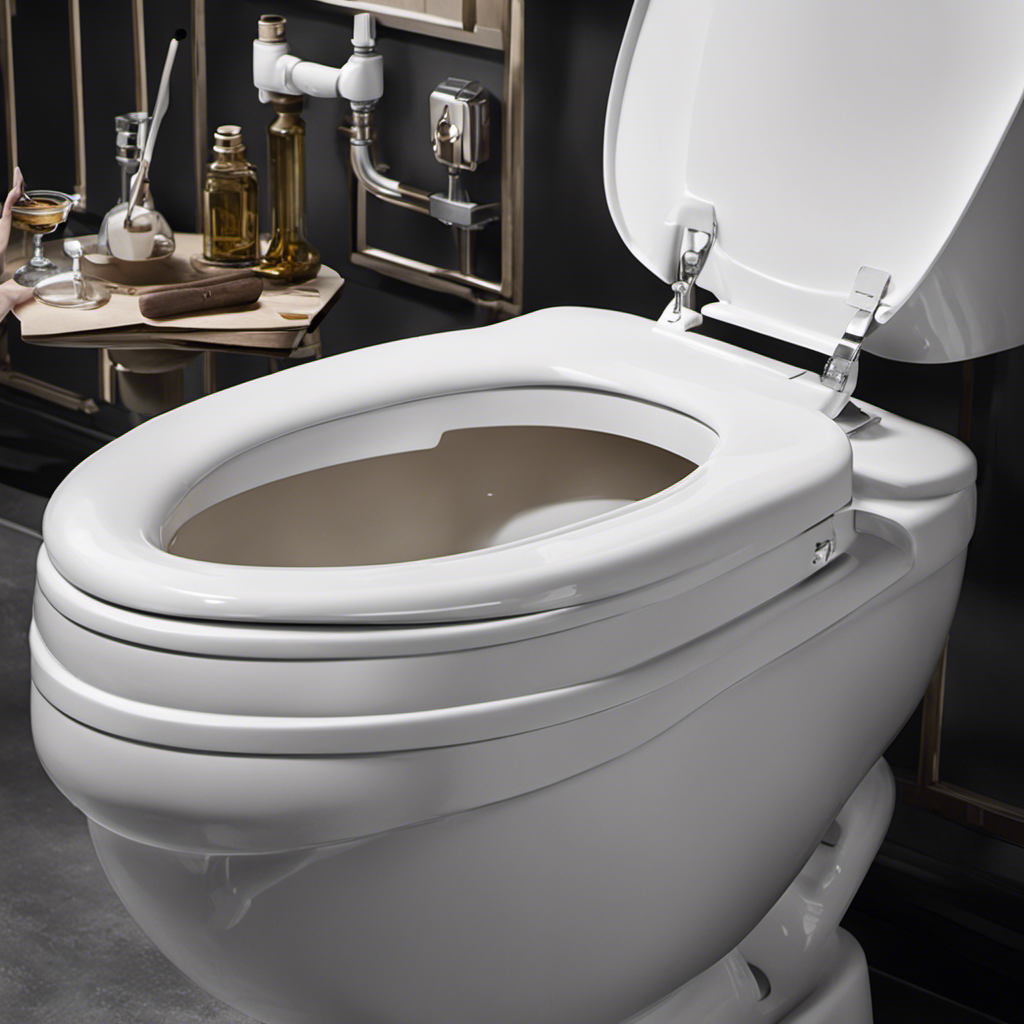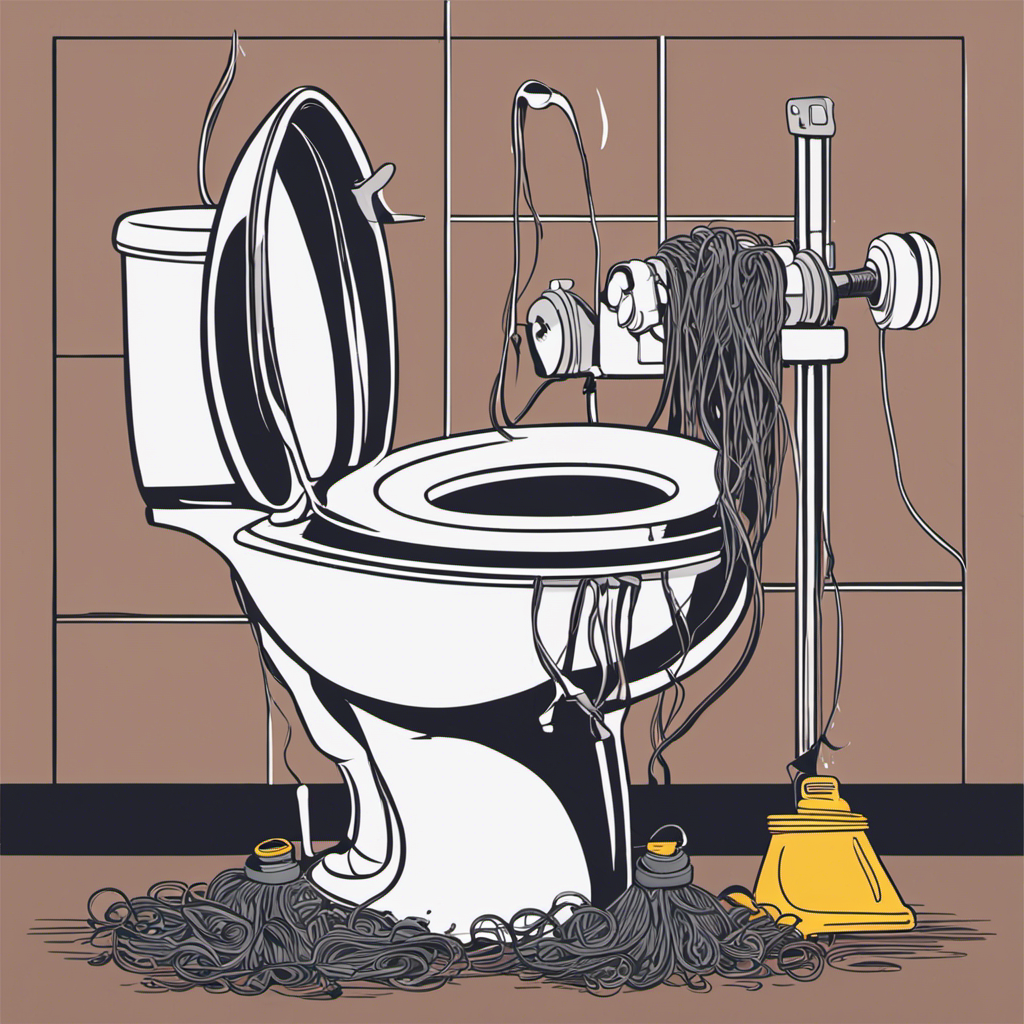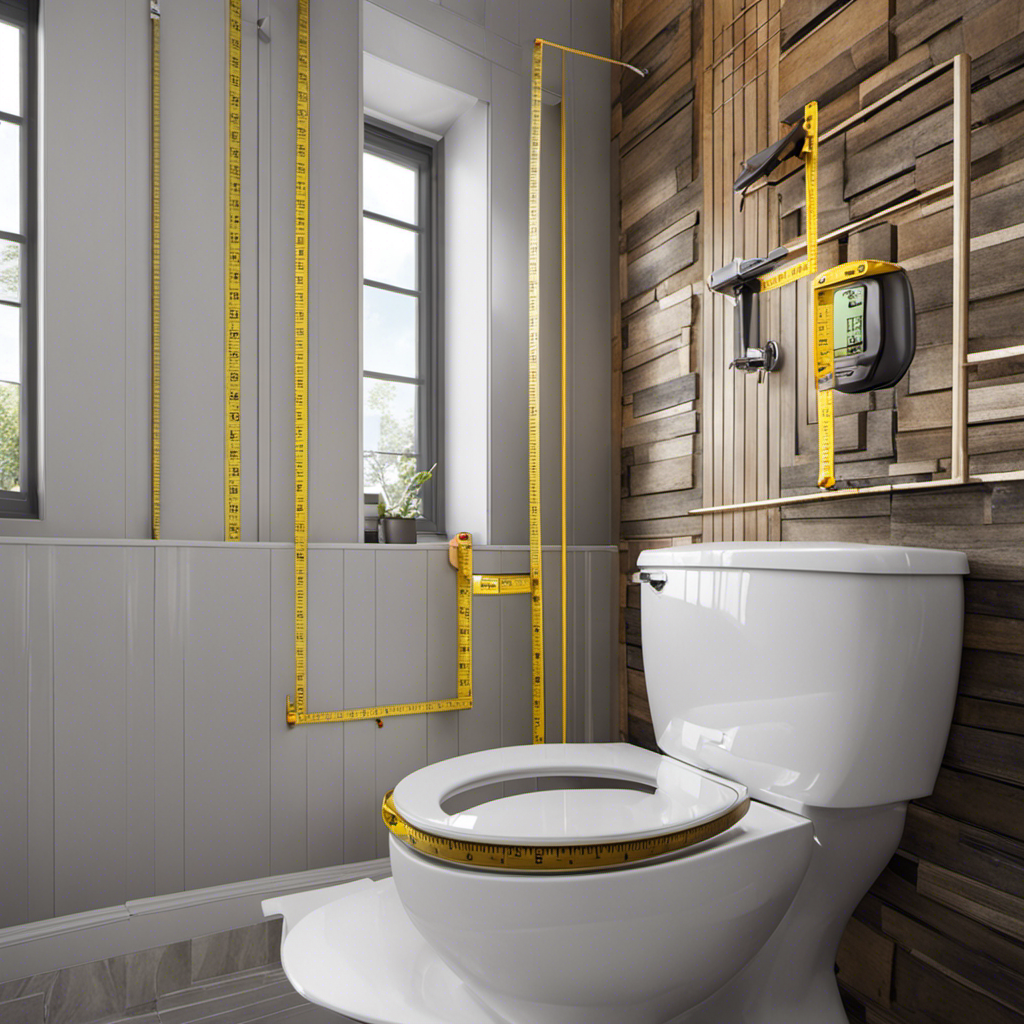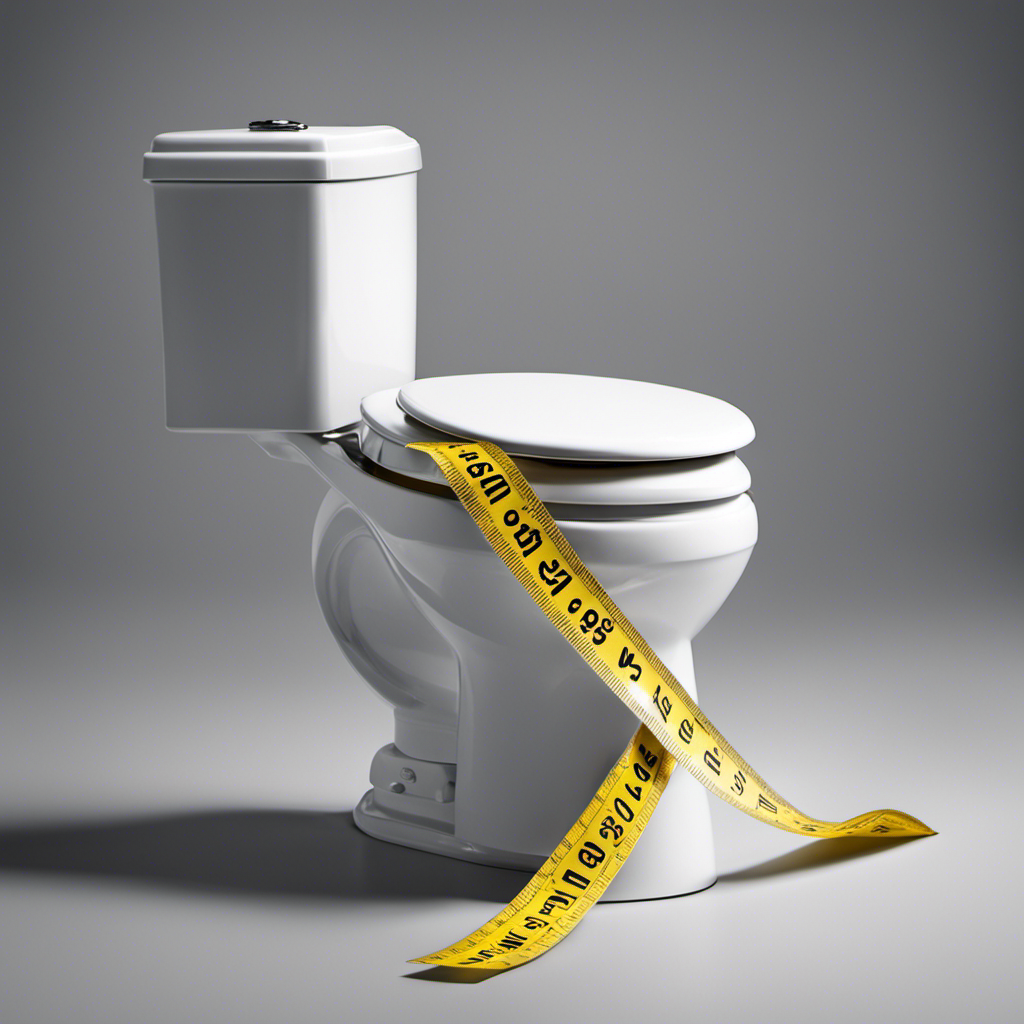I’ve always struggled with keeping the water level just right in my toilet tank. It’s frustrating to constantly deal with a too-high or too-low water level.
But then I discovered the art of adjusting toilet floats. With a few simple tips and techniques, I was able to master the skill and ensure optimal functionality of my toilet.
In this article, I’ll share my knowledge and guide you through the step-by-step process of adjusting different types of toilet floats, so you can say goodbye to water level woes.
Key Takeaways
- There are three types of toilet floats: ball-and-arm float, float cup, and internal float.
- Adjusting a ball-and-arm float involves checking the water level, inspecting the float, adjusting its height, and recalibrating if necessary.
- Adjusting a cylinder float requires checking the water level, inspecting the float cup, finding the adjustment stem, squeezing the release clip, and checking the water level again.
- Adjusting an internal float involves checking the water level, detaching the refill tube, rotating the internal float clockwise, and checking the water level again.
Understanding Different Types of Toilet Floats
I prefer using a ball-and-arm float because it is easy to adjust and ensures the proper water level in the toilet tank.
There are different types of toilet floats available, each with its pros and cons. The ball-and-arm float is a classic choice and is commonly found in older toilets. It consists of a plastic or metal arm with a ball attached to the end.
One of the common problems with toilet floats is when they become mispositioned, causing issues like weak flushing or a running toilet. To troubleshoot this, you can adjust the float’s height by following a few simple steps.
Another type of float is the float cup, which is a plastic cup that surrounds the fill valve. It is known for its quiet operation and can be easily adjusted by squeezing the release clip.
Lastly, the internal float is located inside the toilet tank and is usually attached to the fill valve. It can be adjusted by rotating it clockwise to increase the water level.
Understanding the different types of toilet floats and how to troubleshoot common problems will help ensure that your toilet functions properly.
Step-by-Step Guide to Adjusting a Ball-and-Arm Float
First, check the water level in the tank when adjusting a ball-and-arm float. This is an important step to ensure that the float is properly adjusted and functioning correctly.
Here are some key steps to follow when adjusting a ball-and-arm float:
- Inspect the float cup for any signs of damage or wear.
- Adjust the float’s height by bending the float arm if needed.
- After making adjustments, check the water level in the tank to ensure it is at the desired level.
- If necessary, recalibrate the float by repeating the adjustment process.
- Troubleshoot float issues by checking for signs of a mispositioned float, such as weak flushing or a running toilet.
Adjusting a Cylinder Float: Easy Techniques
After checking the water level in the tank, proceed to inspect the float cup when adjusting a cylinder float.
Cylinder floats, also known as float cups, are commonly found in modern toilets. They are responsible for controlling the water level in the tank.
If you’re experiencing issues with your toilet’s float cup, there are a few troubleshooting steps you can take.
First, ensure that the float cup is properly attached to the fill valve. If it’s loose or damaged, it may need to be replaced.
Additionally, check for any debris or mineral buildup that may be preventing the float cup from functioning properly. Cleaning the float cup with vinegar can often resolve these issues.
If the float cup is still not working correctly, it may be necessary to consult a professional plumber for further assistance with cylinder float maintenance.
Mastering the Art of Adjusting an Internal Float
When adjusting an internal float, it is important to first check the water level in the tank. This will ensure that you have an accurate starting point for adjusting the float.
Here are some tips for mastering the art of adjusting an internal float:
-
Rotate the float: Locate the internal float inside the toilet tank and rotate it. This will adjust the height of the float and can help troubleshoot issues such as a running toilet or low water level in the bowl.
-
Troubleshooting issues: Adjusting the internal float can help fix problems like weak flushing or a lower water level in the tank. By rotating the float, you can fine-tune the water level to ensure optimal performance.
-
Inspect the float: Before adjusting, make sure to inspect the float for any damage or wear. If the float is damaged, it may need to be replaced.
-
Check the water level: After adjusting the float, always check the water level in the tank. This will ensure that you have achieved the desired water level and that the float is functioning properly.
-
Recalibrate if necessary: If the water level is still not at the desired level after adjusting the float, you may need to recalibrate the float by repeating the adjustment process.
How to Properly Close the Water Supply for Float Adjustment
To properly close the water supply for adjusting the float, I need to locate the shutoff valve. This is an important step in troubleshooting float adjustment issues and ensuring proper maintenance.
The shutoff valve is usually located on the wall behind the toilet. Once located, I use penetrating oil if needed to loosen any rust or debris. Then, I twist the valve clockwise to close the water supply. This prevents water from flowing into the tank while I adjust the float.
It’s crucial to regularly maintain the float to ensure optimal toilet performance. By regularly checking and adjusting the float, I can prevent issues such as weak flushing, running toilets, and low water levels in the tank and bowl.
Taking the time to properly close the water supply and adjust the float will help keep my toilet functioning smoothly.
Identifying Signs of a Mispositioned Toilet Float
I can easily identify signs of a mispositioned toilet float. These signs include weak flushing, lower water level in the tank, and a running toilet. When the float is not properly positioned, it can cause various problems with the toilet’s functionality. Common problems with toilet floats include improper water level control, resulting in weak flushing and lower water levels in the tank. Additionally, a mispositioned float can cause the toilet to continuously run, wasting water and potentially leading to higher water bills.
Troubleshooting tips for toilet float issues involve adjusting the float’s height, checking the water level in the tank, and recalibrating if necessary. It’s important to address these problems promptly to ensure optimal toilet performance and prevent further damage.
FAQ: Turning the Toilet Float Screw and Fixing Low Water in the Toilet Tank
By turning the toilet float screw clockwise or counterclockwise, the water level in the toilet tank can be adjusted accordingly. Troubleshooting common issues with toilet floats is essential for maintaining proper water levels and preventing problems like weak flushing or a running toilet.
To fix low water in the toilet tank, you can lift the float by unscrewing the bolt holding the ball float. This will increase the water level by an inch or two.
If the water level is too high, turning the screw counterclockwise will lower the float and adjust the water level accordingly. It’s important to remember that the screw may make a full circle to reach the targeted position.
Frequently Asked Questions
Can I Adjust the Height of a Float Cup?
Yes, you can adjust the height of a float cup. To troubleshoot float cup issues, start by checking the water level in the tank and inspecting the float cup. Then, find the adjustment stem and adjust accordingly.
How Do I Know if My Toilet Float Is Mispositioned?
To know if my toilet float is mispositioned, I check for signs like weak flushing, lower water level in the tank, and a running toilet. To fix it, I adjust the float’s height or replace it if necessary.
Is It Possible to Adjust the Water Level in the Toilet Tank Without Adjusting the Float?
No, it is not possible to adjust the water level in the toilet tank without adjusting the float. The float is responsible for controlling the water level and any changes to it will impact the water level. Adjusting the float is crucial for maintaining proper water levels and preventing common problems with toilet floats. However, there are alternative water-saving methods that can be implemented to reduce the water level in the tank.
Can I Adjust the Float on a Toilet With an Internal Float?
Yes, you can adjust the float on a toilet with an internal float. Troubleshooting float issues involves checking the water level, detaching the refill tube, rotating the internal float, and checking the water level again.
What Should I Do if I Can’t Find the Shutoff Valve to Close the Water Supply?
If I can’t find the shutoff valve to close the water supply, I can try locating the main water supply valve for the house. If that doesn’t work, I may need to call a professional plumber.
Conclusion
In conclusion, mastering the art of toilet float adjustment is like finding the perfect balance in life. With the knowledge gained from this comprehensive guide, you can effortlessly navigate the three main types of floats, ensuring your toilet tank’s water levels are just right.
Imagine the satisfaction of smoothly adjusting the ball-and-arm float, effortlessly tweaking the cylinder float, and expertly fine-tuning the internal float. By closing the water supply and identifying mispositioned floats, you’ll be the master of your toilet’s functionality.
So go ahead, dive into this knowledge pool and become a toilet float adjustment pro!










